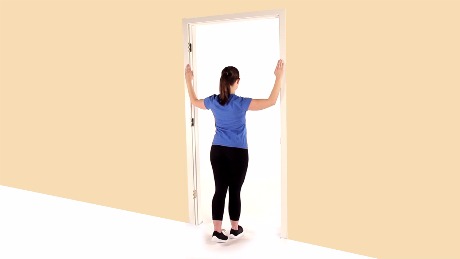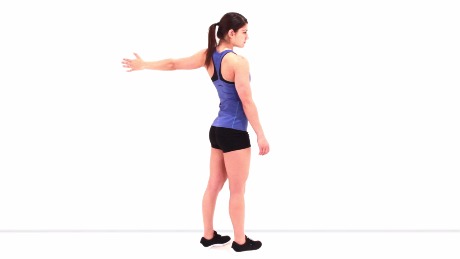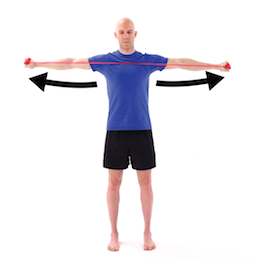Why Does My Shoulder Hurt Reaching Up? Causes and Potential Treatment

Licensed Physical Therapist, PT , DPT // Clinical Director of EW Motion Therapy Tuscaloosa
Whether reaching to grab a cup off a high shelf or trying to stretch in the morning, reaching with your arms is a basic functional movement in the day. It can be annoying, even frustrating, when you have shoulder pain, primarily if it inhibits you from accomplishing those movements. How do you figure out what is causing your pain, and what can you do to fix it?
While you may have some theories about what’s causing your pain, it is best to seek a professional for evaluation. A physical therapist can help you reduce pain and regain range of motion in your shoulder - we do this for our clients every day at EW Motion Therapy. Even if you choose not to come to us, we still want to discuss shoulder pain and your options for treatment.
This article discusses some potential causes of shoulder pain and strategies to lessen pain and move better. This information will allow you to pursue the best treatment for your health and lifestyle.
What can cause shoulder pain?
There are many reasons why your shoulder can hurt. A common reason is impingement of the soft tissues in the shoulder, especially the rotator cuff tendons or bursa. Impingement can often result from muscle and postural imbalances, where the rotator cuff and scapular muscles become too weak or tight. These imbalances can alter the mechanics of the shoulder joint, creating friction and inflammation, which can inhibit your range of motion over time. Impingement is typically a gradual onset - you may not have a specific injury or another issue that causes the problem.
Another common shoulder problem after a trauma can be a rotator cuff tear or strain. With this condition, it’s common not to be able to move the shoulder without pain. If this persists for more than a few days after the trauma, it is advisable to see a doctor. Physical therapy can be an excellent treatment option to help you heal properly and regain your range of motion. However, if your pain begins to interrupt your daily activities or sleep patterns for an extended period without relief, you may need surgical intervention to heal properly.
Wanting to try physical therapy for yourself? Click to download our 20 Physical Therapy Questions, Answered to learn more.
How can you lessen the pain?
There are temporary solutions to reduce pain, including medication and ice or heat on the painful site. However, the actual problem may lie deeper. Strengthening the shoulder and upper back, as well as correcting postural and muscular imbalances, are some ways to address the underlying causes of shoulder pain. Reducing or limiting repetitive activities that stress the shoulder can also be helpful.
If you go to the doctor for your pain, they will examine your range of motion, strength, posture, and other factors to determine the structures involved and the severity of your injury. They may prescribe medications to help, like a corticosteroid or other anti-inflammatory. Still, many doctors will often refer you to physical therapy to restore your range of motion and strength.
How can physical therapy help?
Physical therapists are experts in the science of movement and can help restore balance, improve range of motion, and enhance functional movement in your shoulder. They will complete a thorough evaluation of the mechanics and positioning of your shoulder, as well as any other factors that could be contributing to your pain. Then, they might employ some hands-on soft tissue work to ease any tightness or discomfort. After your evaluation, you will receive a home exercise program that will help you continue to improve outside of the clinic. Your exercises should begin to address limitations in strength, range of motion, and restoration of functional mobility.
Below are a few home exercises our therapists have assigned for patients with shoulder imbalances. If you wish to try any of these at home, check with your doctor or physical therapist to ensure it is safe.
Doorway Pec Stretch at 90 Degrees Abduction: Begin in a standing upright position in the center of a doorway. With your elbows bent, place your forearms on the sides of the doorway at a 90-degree angle from your sides, then take a small step forward until you feel a stretch in the front of your shoulders. Hold this position. Make sure to maintain a gentle stretch and not shrug your shoulders during the exercise.

Standing Pec Stretch at Wall: Begin in a standing upright position facing a wall with your arm straight out to your side and your hand resting on the wall. Rotate your trunk away from your arm until you feel a stretch in the front of your chest, and hold. Make sure to only move in a pain-free range of motion.

Standing Shoulder Horizontal Abduction with Resistance: Begin in a standing position holding a resistance band in each hand with your arms straight in front of your body and fists facing the floor. Pull your hands apart until they are directed to your sides, then return to the starting position and repeat. Make sure to keep your arms level and think of squeezing your shoulder blades together as you pull the band. Maintain good posture during the exercise and avoid shrugging your shoulders.

What if I can’t move my shoulder at all?
Now you know more about shoulder pain and some of the things that might be causing it. If you experience a gradual reduction in your range of motion over time or you have had a previous shoulder fracture, you may have a frozen shoulder (adhesive capsulitis), in which case a doctor’s evaluation needs to be your first step. They may then refer you to physical therapy to help get your shoulder moving again.
Our shoulders are essential to daily functional movement, and it is vital to have the proper range of motion so you can do the activities you love. At EW Motion Therapy, our physical therapists prioritize our clients’ goals above all else, tailoring our treatment plans to meet your specific needs. If you want to learn more about what physical therapy can do for you, click the button below to download our 20 frequently asked physical therapy questions.


